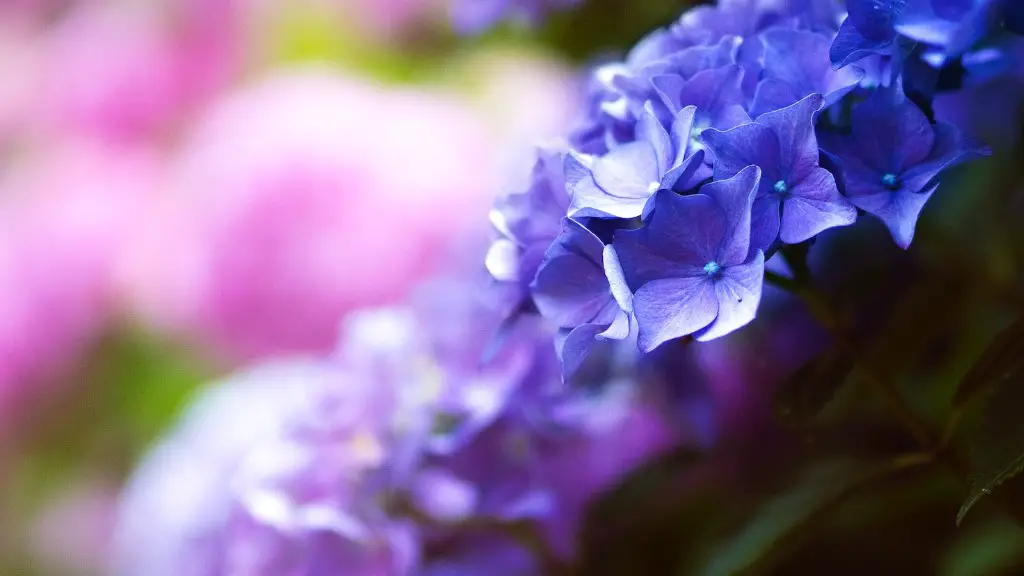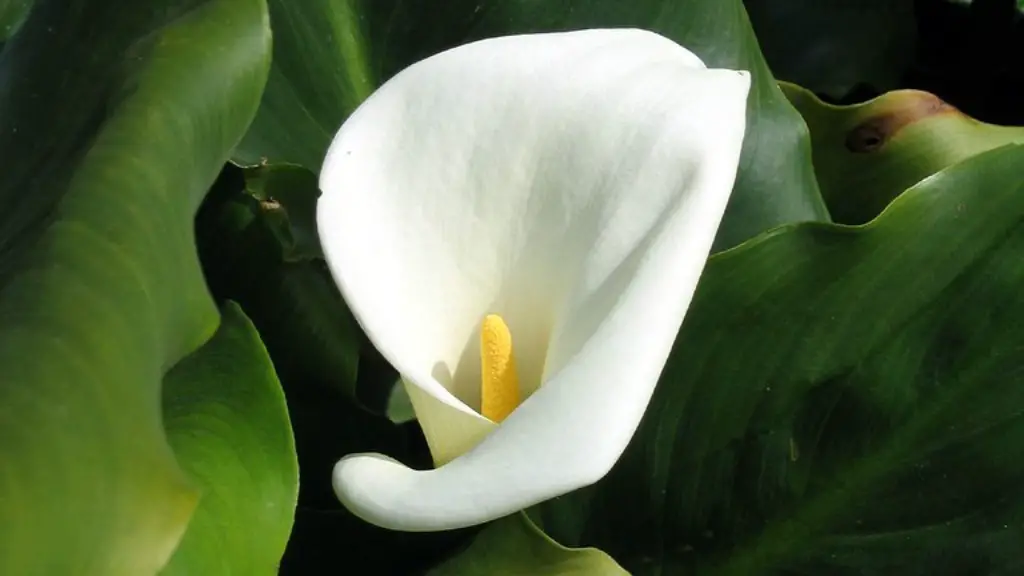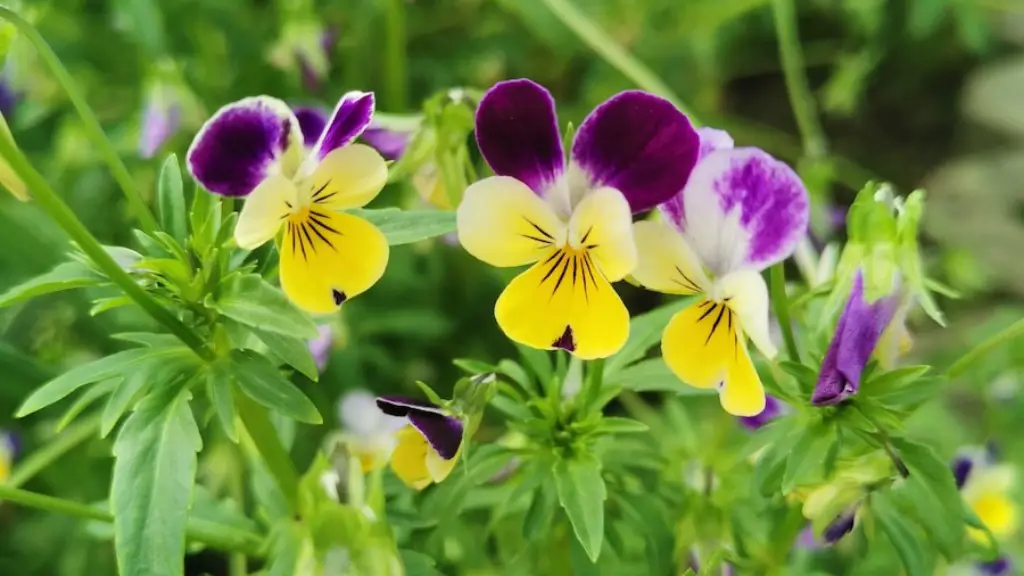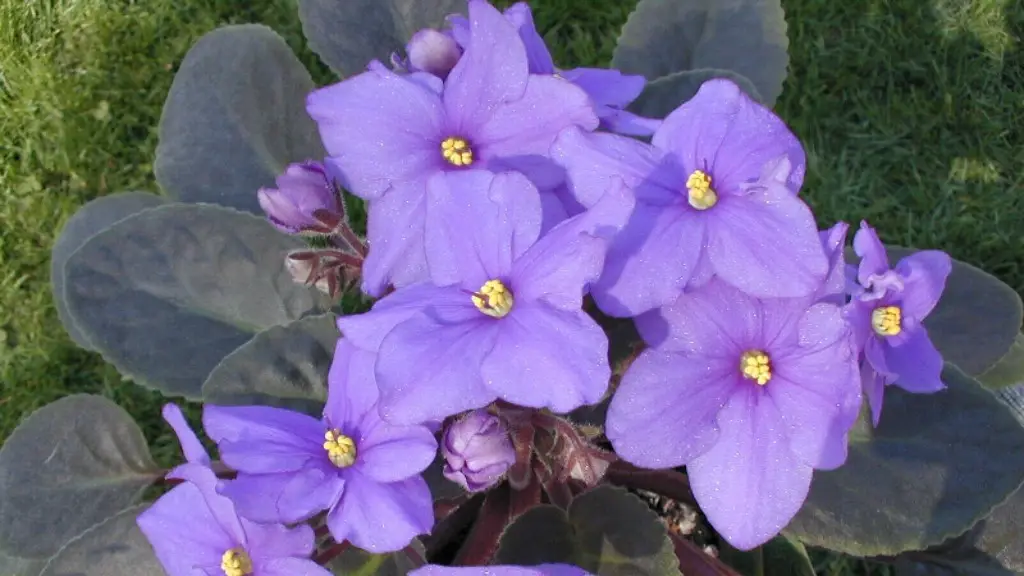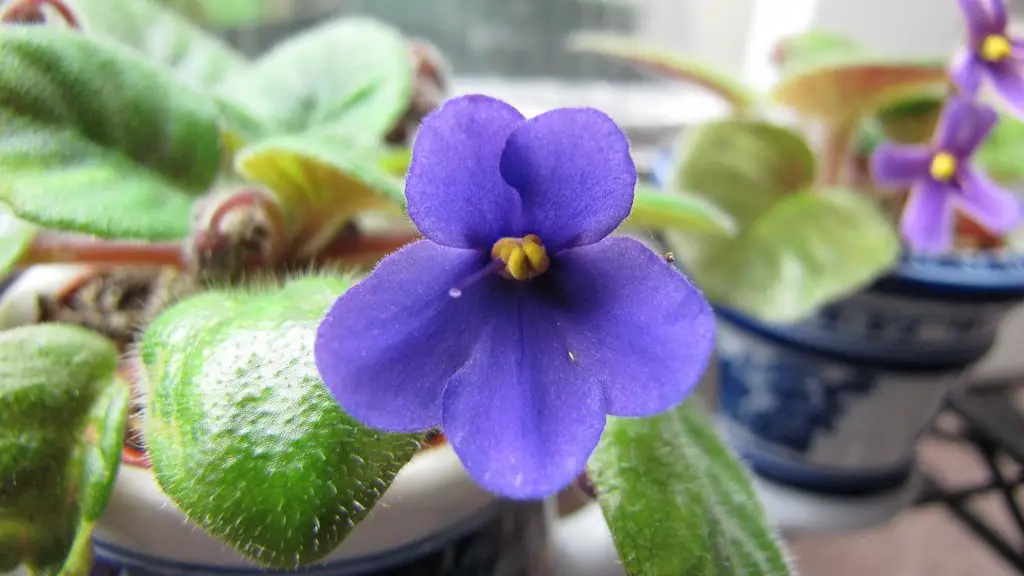African violets are one of the most popular houseplants. They are beautiful, easy to care for, and come in a wide variety of colors and shapes. Growing new African violets is easy and can be done with just a few simple supplies.
There are a few key things to remember when growing new African violets:
1. African violets need bright, indirect light. Too much direct sunlight can scorch the leaves, so it’s best to place them near a south- or west-facing window.
2. African violets prefer evenly moist soil. Allow the top inch of soil to dry out in between watering.
3. African violets need humid conditions to thrive. Try misting the leaves a few times a week, or placing a humidity tray under the pot.
4. African violets need to be fertilized regularly. Use a water-soluble fertilizer formulated for African violets, and feed every 2-3 weeks.
5. To encourage blooming, keep African violets in a cool room (around 65 degrees Fahrenheit).
Can you start an African violet from a leaf?
African violets are easily propagated by leaf cuttings. Select a firm, healthy leaf and cut it off with a sharp knife. Leave 1 to 1½ inches of the leaf stem (petiole) attached to the leaf blade. Fill a pot with a moistened 50:50 mix of vermiculite and coarse sand. Place the leaf cutting in the pot, and cover it with a plastic bag to create a humid environment. Place the pot in a warm location, out of direct sunlight, and keep the soil moist. In 4-6 weeks, the leaf cutting will produce new plants.
If you want your plants to have the best color and blooms, grow them in bright, indirect light. A plant stand three feet away from a west- or south-facing window is an ideal location. Plants will still grow when situated right beside north- or east-facing windows, but leaves will be thin and spindly, and plants less likely to bloom.
Is it better to propagate African violets in water or soil
African violet leaf propagation in water is a slower process than in soil, but the resulting plant is larger and healthier. This is due to the increased moisture and humidity that the leaves are exposed to in water, which promotes growth.
African violets are one of the easiest plants to propagate from cuttings. With just a few simple steps, you can have new plants to add to your collection.
1. Prepare your rooting medium. African violets need a well-drained, soilless mix. You can purchase a pre-made mix at your local garden center, or make your own by mixing equal parts perlite, vermiculite, and peat moss.
2. Add water. Moisten your mix thoroughly, but do not make it soggy.
3. Fill your pots. Fill each pot with moistened mix, leaving enough room at the top for the leaves.
4. Choose leaves. Select healthy leaves with no brown spots or other damage. Avoid leaves that are too small or too large.
5. Prep leaves. Using a sharp knife, cut the leaf stem at an angle, just below the leaf node.
6. Apply rooting hormone. Dip the cut end of the leaf stem into rooting hormone powder or gel.
7. Potting up the cuttings. Gently insert the leaf stem into the potting mix, being careful not to damage the leaf. Water
Is it OK to touch African violet leaves?
It is not recommended to brush the leaves of african violets because this can damage the plant and decrease its quality and size.
Pruning African Violet leaves is a great way to keep your plant healthy and promote new growth. Remove older leaves by pinching the stem between your fingers where it connects with the plant base. You may also use sterilized scissors, taking care to remove the stem as close as possible to the plant base without cutting into the parent plant.
Is coffee grounds good for African violets?
Coffee grounds are a great source of nutrients for plants. They are slightly acidic and contain nitrogen, which helps plants grow healthy foliage. Used coffee grounds can also help improve drainage and aeration in potting soil. When used sparingly, coffee grounds can be a great addition to African violet potting soil.
African violets need bright, indirect light in order to thrive. A spot near an east- or north-facing window is often a good option. However, do not place them in direct sun, as this can damage the leaves. If a suitable window is not available, you can place them under a fluorescent light fixture containing two 40-watt fluorescent tubes.
How often should a African violet be watered
African violets are beautiful, delicate flowers that thrive in humid environments. If you live in a dry climate, or if your home is particularly dry, you may want to water your African violets less often. One way to do this is to water them once a week, and allow the plant to completely dry out between waterings. Another option is to set up a wicking system, which will provide the plant with a constant supply of moisture.
This is an all-purpose plant food that can be used on African violets and other blooming houseplants. It is a high-phosphorus formula that will promote bountiful blooms.
How long should African violets sit in water?
If you water your African violet with water that is too cold, it may harm the plant. Make sure the water is at room temperature or warmer before giving it to your plant. It’s best to let the water sit for 24-48 hours to let the chlorine evaporate, but if you can’t wait that long, then at least let the water stand for an hour before using it.
African Violet roots don’t go very deep; they like to go sideways, so don’t use a deep pot. Your pot must have suitable drainage holes so you can water from underneath. You can also get African Violet specific pots that have a terra cotta sleeve you plant in, and a water reservoir.
How long does it take for African violet cuttings to root
It’s amazing how quickly an African violet cutting can take root and grow new leaves! In just a few short weeks, you can see new leaves beginning to form. And in 2-6 months, the cutting will be well-established in its new pot.
It is important to repot an African Violet when it becomes rootbound as this can impact the health of the plant. Allowing the roots to grow out and around the rootball can cause the plant to become unstable and potentially harm the delicate roots.
Do you water African violets after repotting?
Adding water after repotting will compact the soil to some degree, but this is unavoidable. As needed, you may add a little more potting mix to the top of the pot to stabilize the plant. Tip #4 Keep the pot small and shallow. African violet roots generally do not grow deep or wide.
When transplanting your African violet to a larger pot, be sure to use a pot that is only 1-2 inches larger in diameter. African violets need a tight-fitting pot to thrive. Also, be sure to use a well-draining potting mix formulated for African violets. too much space and too much water can be detrimental to your plant.
Warp Up
To grow new African violets, you’ll need to start with a healthy mother plant. Choose a plant that has healthy leaves and is not rootbound. water your plant well and then make a leaf cutting. Cut a 4-6 inch piece off of a healthy leaf, making sure to cut at an angle so that more surface area is exposed for the new roots to grow. Dip the cut end of the leaf in rooting hormone and then plant it in well-draining African violet potting mix. Be sure to keep the potting mix moist but not soggy. Place the pot in a warm, brightly lit location out of direct sunlight and wait for the new plant to grow!
When it comes to growing African violets, there are a few key things to keep in mind. First, African violets need bright, indirect light. Too much direct sunlight can scorch the leaves, so it’s best to place them near a window where they can get plenty of light without being in direct sunlight. Second, African violets need to be kept moist, but not too wet. The best way to water an African violet is to use a watering can with a long, thin spout so that you can direct the water to the base of the plant without getting the leaves wet. Finally, African violets need to be fertilized regularly in order to stay healthy and bloom. A good general-purpose fertilizer that can be used on African violets is one that is high in phosphorus, which will help promote blooming.
